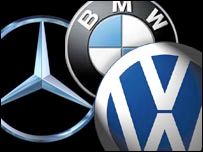The “Ponzi scheme.” It is one of the evergreen ways of making money and one of the most consistently successful mechanisms for committing fraud. It’s named for the fella that first did it big time, but he can’t have been the first to do it.
What you do is you create an investment scenario that promises extraordinary returns. You get a few people to invest. Then you return them the money that you said you’d return. More people invest, and they get the same return. So even more people give you money.
Of course, in the end, it falls because you were paying the original investors from the money contributed by the next investors, etc. The key is to leave the country before the s—t hits the fan.
This is a financial model that has, in the past, accounted for unbelievable amounts of money. The electrification of most of the suburbs in America in the 1920’s was financed by a Ponzi scheme perpetrated by one Samuel Insull, a protégé of Thomas Edison with a knack for finance. But, in those days, the difference between legitimate finance and a pyramid scheme was less evident, at least legally, than it is today.
So, why is this relevant to cars?
Because BMW, Mercedes-Benz, Audi and Porsche are all Ponzi schemes.
It occurred to me when I read in the Detroit News this morning that GM and the UAW has tabled the VEBA and are going to talk about other things for a while. There are no other things to talk about – everything hinges on the VEBA. So, this means that the UAW doesn’t know what to do, and that GM has actually, for the first time in history, decided exactly what it is willing to pay, and has an exit strategy if it doesn’t get its price.
Those nice folks in Stuttgart are next.
It’s not just that labor costs in Western Europe, particularly Germany, are extravagant.
It’s that the German automakers have done exactly the same things that GM did, and they’re going to get hammered for exactly the same reasons.
The difference is that the management at GM sees the future, and the management at the German automakers see the past.
Think back about forty years.
General Motors was faced with increasing regulations about fuel economy and emissions in automobiles. At that time, they made very big cars. The biggest seller in America was the Chevrolet Impala: 350 cu. in. and about twenty feet long. And a damn fine car, one that most Americans wanted to buy. If you had real money, you bought a Cadillac. More cubes and longer.
But then the Ralph Naders and the politicians came in and decided that you couldn’t have that car. So, GM like the rest of the auto industry, downsized.
Sound familiar?
Sound like those “green” idiots in Europe? The ones that are running the show?
In three part harmony, it does.
In the United States, they took control.
Except in trucks.
You see, trucks were an exception.
In 1969, the best selling station wagon in the country was the Ford Country Squire – the one with the wood on the side, as Steve McQueen called it in “The Thomas Crown Affair.” Ford owned the wagon market – they even called themselves the “Wagonmasters,” after a popular television show of the time. The Country Squire was what you drove when you had bucks and a family, and you lived a life of leisure in the country. Or, at least, it was what you drove if those were your aspirations.
But, for the rest, you drove a Chevy, an Impala, because it was, in effect, the American dream come true. It had it all: luxury, performance, and a price that let you trade for a new one when the payments were done.
The government took that away, abetted by the insurance industry and those who still believe that you should be taking a bus, and the result was Vegas, Novas, Falcons, and now Smarts, the Prius, and those automotive Hush Puppies, the Honda.
But the government let you buy a truck without all of those “Ralph Nader knows better than you do” restrictions.
So, truck sales zoomed, and they invented the SUV.
Have you not noticed that the typical SUV has about the same weight, horsepower, and size as a Ford Country Squire from 1969?
So, how is this all a Ponzi scheme?
Here’s how:
GM and Ford have made their money, over the last decade, the old-fashioned way: they’ve sold two ton V-8s with luxury and space. That’s what sold in the 1950’s, in the 1960’s, and in the last decade, too. The only time that hasn’t sold is when the government had the automakers too scared to sell it.
The Germans got their foothold in America in that interlude, the ‘70’s and ‘80’s, when Detroit wasn’t making an automobile that gave the buying public what it wanted. There were some that still wanted a Buick. Buick didn’t build it. BMW did. So they bought the BMW. As Buick, Pontiac, and Chevrolet all became afterthoughts, they lost buyers. Those buyers bought German.
But there is an end-game here.
What made that 1969 Impala such a success was value. It was, flat out, a good deal. It gave you twice what you got for the same money a mere decade before.
The problem is that the value-added of today has nothing to do with the car. With the BMW, it’s electronics and a joystick. With Mercedes, it’s making a bus with the fuel economy of a Mini – as though anyone really cares.
Is there anything more stupid in the automotive world than the Bugatti Veyron?
Yes. The management that decided to build it.

